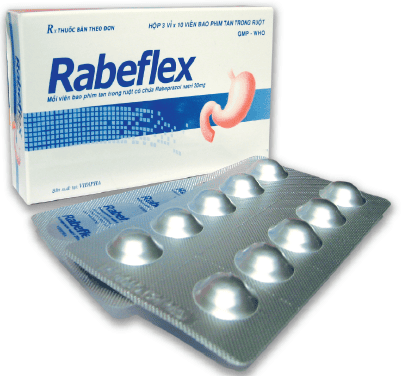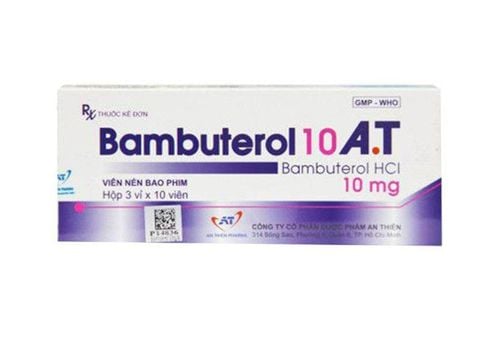This is an automatically translated article.
The article was professionally consulted with Specialist Doctor I Tran Quoc Vinh - Emergency Doctor - Department of Resuscitation - Emergency - Vinmec Nha Trang International General Hospital.Epiglottitis is a local inflammation of the epiglottis and adjacent structures such as the larynx and pharynx. This is a life-threatening condition that causes swelling and obstruction of the upper airways that can lead to asphyxiation and respiratory arrest. Therefore, it is necessary to understand the causes of epiglottitis for proper prevention and treatment.
1. What is epiglottitis?
Epiglottitis is inflammation of the epiglottis at the bottom of the tongue. The disease, if not treated in time, can be life-threatening.The epiglottis is made up of cartilage and acts as a valve to prevent food and liquid from entering the trachea to carry out eating activities.
The epiglottis at the epiglottis becomes inflamed, swollen, which can lead to infection and even obstruction of the airways.

2. What is the cause of epiglottitis?
Bacterial infections are the leading cause of epiglottitis. These bacteria come into contact with the body through the air, then enter the tissue cells. In children, Haemophilus influenzae type B (Hib) is the most common cause.In addition, non-infectious causes can include:
Weakened immune system: If the person already has a weakened immune system due to illness or treatment with immunosuppressive drugs for illness On the other hand, these subjects are very susceptible to bacterial infections and can cause epiglottitis. Not fully vaccinated: Delaying or skipping immunizations can make a child more susceptible to Hib and increase the risk of epiglottitis. Regular smokers Inhaling chemicals or often working in hazardous chemical environments Ingesting foreign bodies Throat burns with boiling water or other heat effects Throat trauma due to many causes such as: bone fracture, direct trauma... Less commonly due to anaphylaxis (allergic).
3. What are the symptoms of epiglottitis?
3.1 Symptoms in children In children, signs and symptoms of epiglottitis may be new and develop rapidly within a few hours and include:Fever Sore throat, severe laryngitis High-pitched, hoarse voice (with laryngitis) Difficulty breathing Unusual sound when inhaling (hissing) Difficulty swallowing and painful swallowing, difficulty speaking Drooling Acts of anxiety, restlessness Feels better when placed Sit up or lean forward. 3.2 Symptoms in adults For adults, signs and symptoms may develop more slowly, over days rather than hours. Signs and symptoms may include:
Sore throat, severe laryngeal pain Fever A muffled or hoarse voice High-pitched voice An unusual sound when inhaling (whooping sound) Difficulty breathing, difficulty speaking Difficulty swallowing

4. How to diagnose painful inflammation of the epiglottis?
When approaching the patient, if the history or symptoms suggest epiglottitis, the first priority should be to ensure that the airway remains open and oxygenated. At the same time, breathing rate and blood oxygen level will be continuously monitored. If oxygen saturation levels drop too low, the person may need help breathing.More thorough examination and tests can only be ordered after the breathing has stabilized:
Throat examination: The doctor will shine a light so he can look down at the throat to see the cause. laryngeal pain symptoms. At the same time, the local anesthetic right during the examination can help reduce discomfort for the patient. Chest or neck X-ray: Because of the potential risk of sudden dyspnea events, children may have bed X-rays instead of the radiology department - but only after the airway is secured. guard. With epiglottitis, if accompanied by glottis stenosis, an x-ray may reveal the “roof of the church” sign. Throat cultures and blood tests: For the culture, the epiglottis is swabbed with a cotton swab and the tissue sample is checked for Hib. Blood cultures are often done because of the possible progression to sepsis - a severe blood infection - that can follow epiglottitis.
5. Measures to treat epiglottitis
Treatment for epiglottitis is first to ensure that the person is still able to breathe on their own, and then to treat any identified infections or causes.5.1 Airway support The first priority in treating epiglottitis is to ensure that the patient is still receiving adequate air at all times. This may mean:
Wear a breathing mask to increase oxygen delivery to the lungs. Place a breathing tube into the windpipe through the nose or mouth (intubation). The tube must be left in place until the swelling in the throat has subsided - sometimes up to several days. Open the trachea to the skin. In a severe emergency or if the above conservative measures are unsuccessful, the physician may have to create an emergency airway by inserting a needle directly into the cartilage in the patient's trachea or using a kit. rapid tracheostomy. This procedure allows air from the outside environment to enter the lungs directly without going through the larynx. 5.2 Treatment of infection If the patient's epiglottitis is determined to be related to the infection, intravenous antibiotics will be administered. Commonly used antibiotic groups:
Broad-spectrum antibiotics: For infections that need to be controlled quickly. At this point, the patient may be given an infusion of broad-spectrum antibiotics immediately, rather than after receiving the results of blood and tissue cultures. Targeted antibiotics: The initial drug may be changed later, depending on the cause of epiglottitis after culture.

In short, epiglottitis is a condition local inflammation and swelling of the epiglottis. Epiglottitis due to bacterial infection is a common cause but can sometimes also occur due to throat trauma, burns... However, whatever the cause, the first rule of treatment is to ensure airways for the patient, preventing dangerous complications that may occur.
Please dial HOTLINE for more information or register for an appointment HERE. Download MyVinmec app to make appointments faster and to manage your bookings easily.
Recommended video:What parts does the upper respiratory tract consist of? Common diseases of the upper respiratory tract














